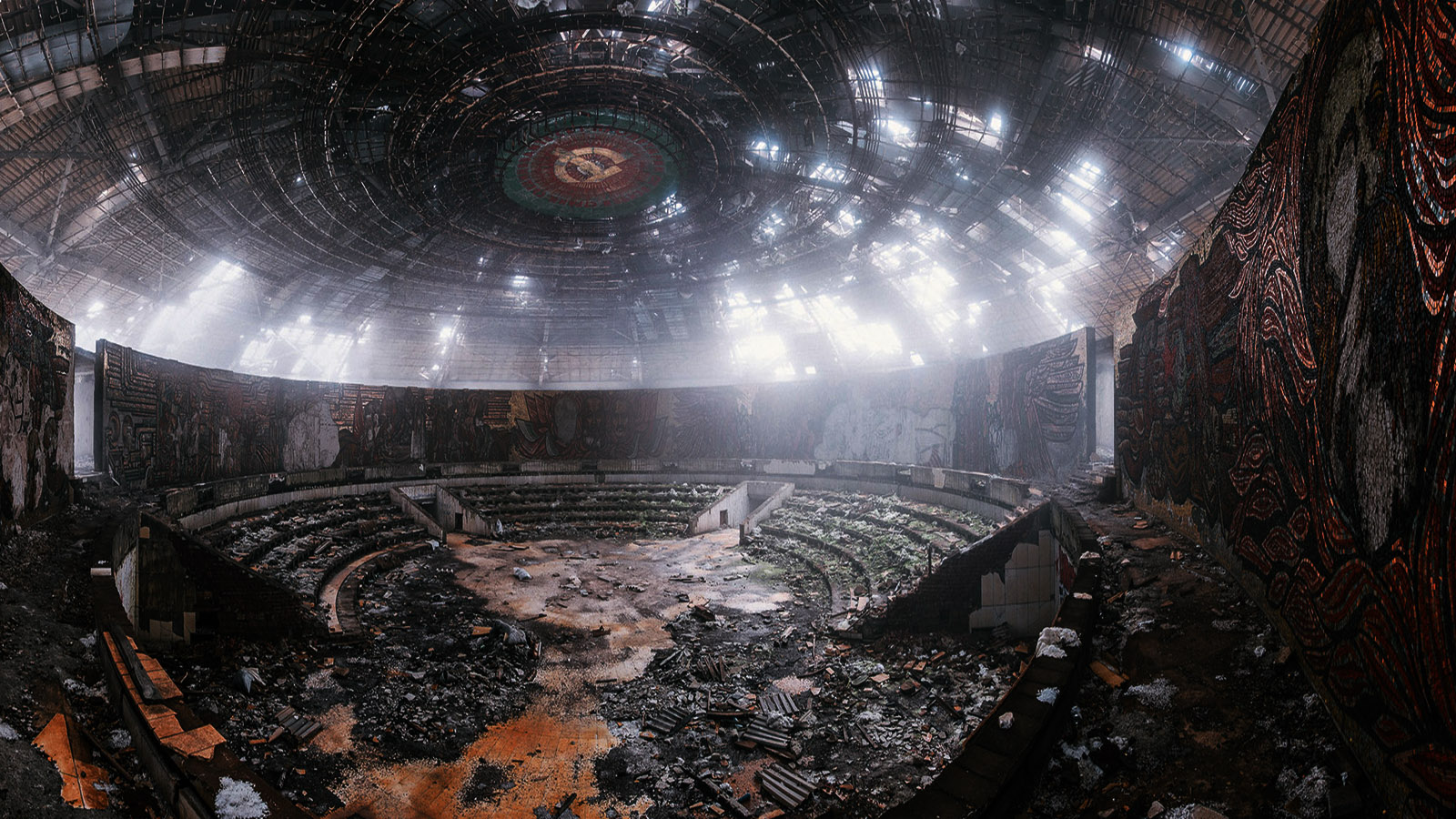If we try to map out an East-West divide for the global political developments of the last decade or so, we might end up with this: the East-West divide is not exactly what it was during the Cold War. It is now a divide between liberal and ‘illiberal’ democracies, and the ideas and undemocratic impulses that have recently come to represent the East have also more recently become ascendant in parts of the West—and also parts of the South—under governments that are further rightwing or leftwing than the norm.This has fomented a new sort of East-West divide that exists in and threatens the East and West (and South), exacerbates divides between Left and Right (not to mention class and race), and terrifies most those in the centre. This description might make intuitive sense if you read certain commentaries, but very little sense if you think only about what it actually says.
Part of the issue here is that, in Europe and the US, both sides of the supposed East-West divide envision themselves as the West. One self-definition is mostly political, with the West being a collection of liberal democracies, members of the so-called ‘liberal international order’. The other self-definition rejects this political West, instead propounding a vision based on nominal Christianity and ethno-nationalism. Viktor Orbán rails against Western Europe but presents Hungary as ‘the last country in Latin – or Western – Christianity’. Proponents of this second West revel in divides – they encourage racial, tout cultural, and fetishize physical divides, and many observers present their true grievances as stemming from class divides. Notably, these visions of the West are not mutually exclusive, and they cannot quite constitute a ‘West-West’ divide, as Christian ethno-nationalism long thrived in liberal democracies. The question, then, is why the rejection of one West has coincided with the illiberal rise of the other.
The rejection of the political West is not limited, however, to the far-right. Using the term ‘neoliberalism’ rather than the West, both left and rightwing groups oppose a political order which saw itself as triumphant and even infallible in the post-1989 moment and then displayed its failings for three decades: the Iraq War, global financial crisis, and the failure to hold those most responsible for these events to account, and encouraging the inequalities and instabilities concomitant to globalization and financialization. If not an East-West divide, or a West-West divide, can we then proclaim a divide between neoliberals and ‘anti-neoliberals’?

Solidarity protests in Germany. The sign reads: ‘Caucescau is gone! Berlin greets Romania’. Photo by Thomas Brauner from Flickr
On Divides
Settling on ‘neoliberalism’ for this divide is not trivial. We are acknowledging either that neoliberalism is responsible for animating both the far left and far right, or that these groups have shaped the conversation successfully enough that it does not matter what neoliberals actually did. As historian Holly Case recently pointed out, it seems some of these groups have indeed shifted the terms to focus on neoliberalism rather than West or East. A divide centred on neoliberalism flattens, however, the differences between far right and far left and hides the importance of that ethno-nationalist West to the far right. There is no single divide that can encapsulate these trends and tensions, and the prospect of analysing the interaction of multiple divides is dizzying. Why this focus, then, on identifying the correct divides? What exactly are we doing when we announce a divide?
By identifying a ‘divide’ at all, we identify a problem, often on someone else’s terms. Different divides, moreover, can speak to essentially different problems, and we do not know just from the use of the word ‘divide’ what type of problem we are dealing with or what the solution might be (if one exists).
Divides between political parties, for example, are not necessarily undesirable. At least some amount of political division is to be expected, if not required, among the parties of a functioning democracy. Such a divide becomes problematic not because of the division itself but the severity of it, the concern that the divide has become unbridgeable and it is no longer possible to walk over to the other side, if just to take a look around. No one calls for the permanent fusion of all parties into one, but coalition-building and cross-party voting, and even just moments of bipartisan understanding, are models of democratic success.
Not all divides are like this. Racial and class divides, and the like, refer to groups that are not just separate but structurally unequal. Depending on one’s perspective, these divides can be permanent and immutable – as the far right often believes with race – or, for many others, they are constructed and would ideally not exist at all. If a white person can walk over to the ‘other side’ of the racial divide, look around and return, that might be a productive moment of empathy, but as long as the ‘sides’ remain, so does the problem. We might also think here of the North-South divide in global politics; this divide exists rhetorically to highlight an imbalance in power. Truly addressing this divide does not mean allowing members of the South to join the North and vice versa. It means making the distinction between the two meaningless in the first place.
The East-West divide, whether in its original Cold War form or its present more nebulous one, is a third sort of divide. It is, at base, a divide between two ideologies that need to displace one another, not to coexist peaceably. Ending the East-West divide means having one type of politics reign supreme. If 1989 was the end of the East-West divide, it was because 1989 brought the triumph of West over East, the final ascendance of liberal democracy. If 1989 was not the end of the East-West divide, however, it is because that triumph was illusory and illiberalism never quite went away. A bridge for the East-West divide, then, facilitates not dialogue or reconciliation but infiltration and victory, the successful replacement of one side with the other.
For those who invoke it, today’s East-West divide is so worrying because it seems the bridges still exist. The divide itself is concerning, but it is the bridges allow, as historian Timothy Snyder writes, ‘influence [to flow] from East to West’. In this view, the ideas and changes that concern the West are flooding in, proponents of illiberalism are getting elected, and they are taking over, for taking over is all that either side can do to the other. But, as noted above, the East-West divide cannot explain as much as it is being asked to explain here; a picture of global illiberalism that originates in Russia or Hungary can easily seem anachronistic or conspiratorial.

The Buzludzha monument (Бузлуджа was built to commemorate the foundation of the Bulgarian Communist Party. After the fall of the iron curtain and the political change in Bulgaria, it was abandoned. Photo by Michael Kötter from Flickr.
For the West’s Sake, A New Divide
While this European East-West divide is being phased out, another might take its place. Indeed, if there is a divide emerging today, it is between the United States and China. Interestingly, though, not all those who encourage a rivalry between the US and China are also interested in proclaiming a divide.
There is little question that a geopolitical rivalry exists between the US and China. In order to evaluate the existence of a divide, however, in the sense of the East-West divide, we need to know whether China seeks to create bridges. This is an active question. In Europe, scholars and journalists are trying to discern whether China is merely encouraging eastern Europe to distance itself from the EU and align itself more with Chinese interests, or if China aims to shape western European governments such that they look like those in eastern Europe and shape eastern European governments so they look more like the one in China. In the former case, China can be successful without changing more than the balance of power in Europe, thus serving as a more traditional rival. In the latter case, we could say there is a ‘divide’, as Chinese geopolitical aims require – or necessarily entail – political change in its rivals.
The current American administration, despite its confrontational stance toward China, seems relatively unconcerned with Chinese bridges. The US-China rivalry, as presented by President Trump and his administration, involves two sides who principally threaten one another’s interests, and less their identities. In this view, China menaces the American economy, military supremacy, and technological superiority, but less so the American political ethos.
Adherents of that political West, the faction championing the liberal international order, however, have been more inclined to make the rivalry into a divide. Two former Obama administration officials wrote in 2018 that the Trump Administration had taken ‘a step forward’ with regard to China but needed to widen its focus beyond these more immediate issues and take a less excessively confrontational approach. In January 2019, one of these officials, Ely Ratner, testified before the Senate Armed Services Committee that the US needs to prepare for ‘long-term competition with China’, the US is ‘currently losing this competition’, and if it continues to do so, it risks allowing ‘the emergence of a China-led order that is deeply antithetical to U.S. values and interests’. This view does not approach Cold War severity, but Ratner is clear that American ideology is at stake. China’s ascendance would come with the rise of an ‘illiberal sphere’ and a global decline in ‘democracy and individual freedoms’
Why do these figures emphasize a potential divide when the erratic administration does not? Whether the liberal international order has ever existed as such or not, commentators like those former Obama administration officials invoke it as reason to take a hard, but prudent, line against China. The current administration in the United States, however, seems aligned more with the ethnonationalist West than the political one, and is thus less concerned with ideological bridges. How could the Trump Administration fear that China threatens the basic values of the American political system when this administration lacks any positive vision of what the US should be? China’s ruling system can pose no threat to Trump’s America because President Trump admires leaders like Xi Jinping and evinces no interest in how the American political system works, either in reality or as an ideal.
Facing this vacuous illiberalism with its ethnonationalistic West, those who project a divide between the US and China are also asserting a vision of the US and its allies. We do not understand well how China’s rise has affected the domestic politics in these countries, whether there are connections to be made between China and illiberalism globally. But, lacking such an understanding, observers are free to present visions of the West as a righteous democratic order that is not sliding toward illiberalism and dissolution for its own faults, but to which illiberalism remains an extrinsic threat, a divide away, an ideological enemy of the West construed such that the ideology of the West itself matters as it once did.








